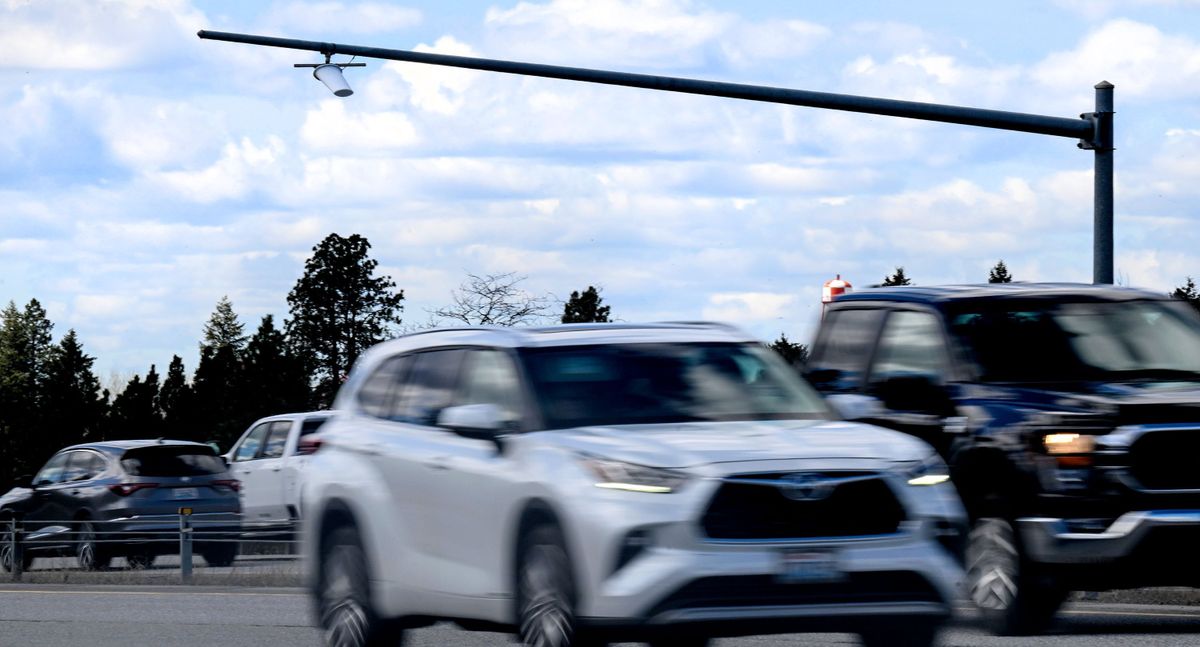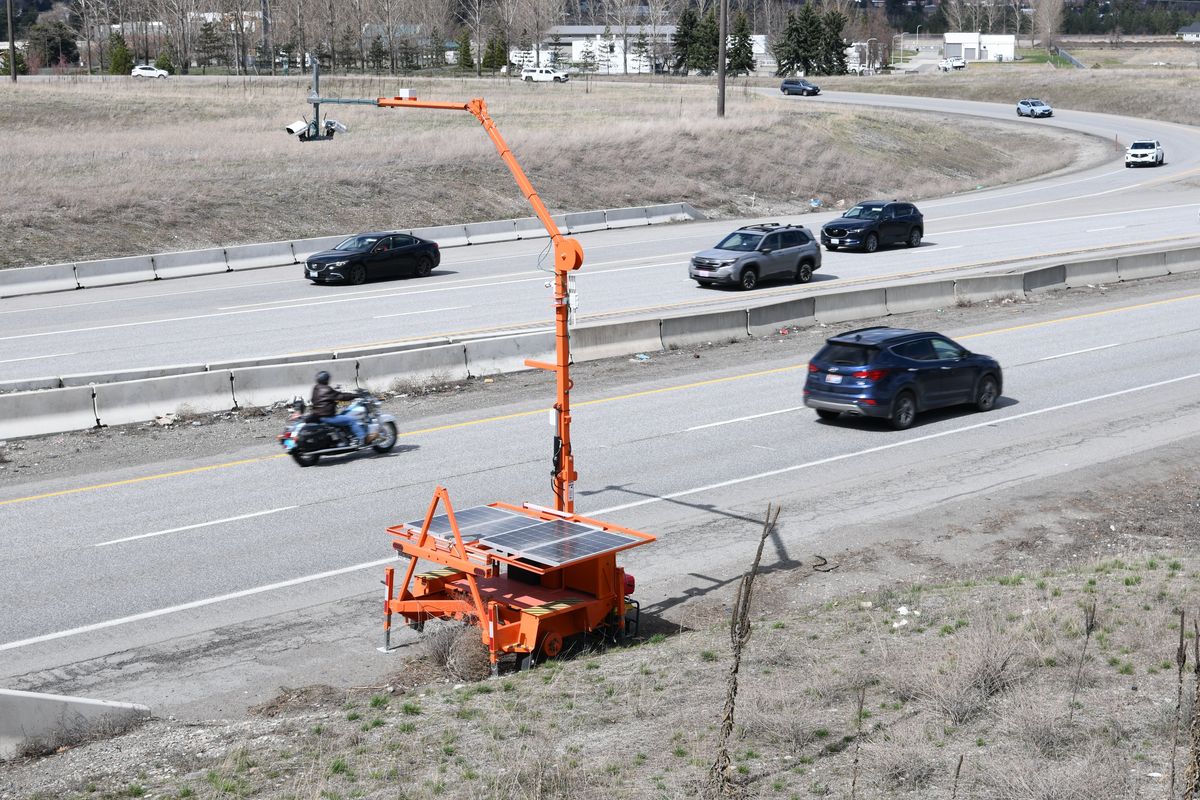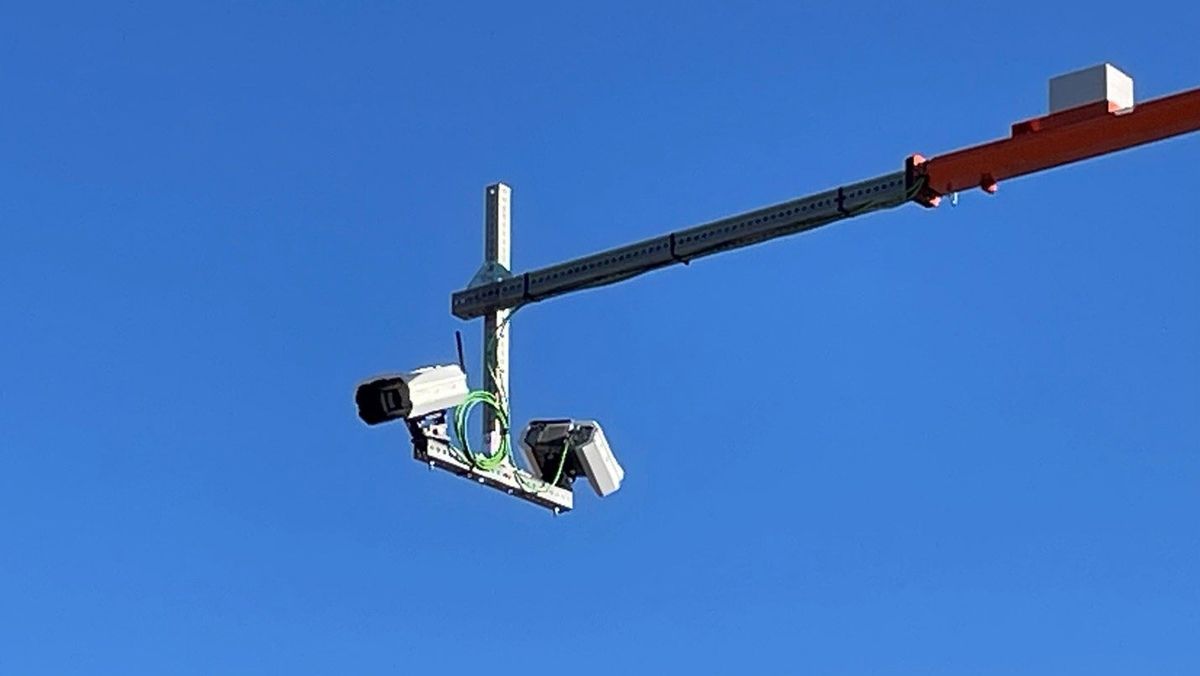Traffic cameras on I-90 near Idaho state line will mail speeding notices instead of tickets
Temporary traffic cameras will catch speeders on eastbound I-90 in Liberty Lake. (James Hanlon)
Speeders leaving Washington for Idaho will get a friendly reminder in the mail to slow down.
Temporary traffic cameras over Interstate 90 in Liberty Lake will track eastbound speeding vehicles and their license plates as part of a pilot program beginning Thursday from the Washington State Department of Transportation. Registered owners of speeding vehicles will receive courtesy notices but no tickets or fines, according to a WSDOT news release.
The speed limit through the zone is 70 mph.
The Legislature launched the Highway Speed Camera Pilot Program with $1 million in funding to reduce speed-related crashes. The program is a partnership between WSDOT, the Washington Traffic Safety Commission and Washington State Patrol.
Safety commission spokesman Mark McKechnie said the program is not issuing tickets because the Legislature did not authorize it to do so.
Cameras will also be tested on southbound Interstate 5 between Cook and Bow Hill roads in Skagit County. The locations were chosen because speed was a factor in serious collisions there, and they have enough space between ramps to obtain accurate data.
Courtesy notices will focus on safety and inform drivers of the potential cost of a ticket for the speed they were traveling. The program does not issue fines, nor does it affect driving records or insurance. The goal is to change driver behavior, prevent collisions and injuries, and save lives, according WSDOT.
Drivers and passengers will not be photographed, McKechnie said. Digital images will only be used for courtesy notices and will not be stored or used for other purposes.
However, statistical data will track traffic patterns, average speeds, the range of speeds and vehicles that speed repeatedly through the area.
After the pilot concludes at the end of June, the cameras will be removed and WSDOT will analyze the data, review public feedback, and report back to the Legislature. WSDOT is taking feedback about the program on its website.
Cameras will track speeds using the “average speed method.” This involves placing multiple cameras at two locations and tracking the time it takes a vehicle to travel between the two points to determine the average speed, rather than a single snapshot. The cameras face both directions to capture more data.
The cameras hover 19 feet over the roadway from trailers placed on the side of the road. The trailers are about three miles apart, with one just past the Liberty Lake Road overpass and the second just before the Stateline exit.
In addition to the notices, the cameras themselves act as a reminder for drivers to slow down, McKechnie said. When a few drivers do, it causes the rest of traffic to slow down as well.
“Hopefully there is an impact on drivers reminding them it is safer to drive the speed limit,” McKechnie said.
This program is different from the Work Zone Speed Camera Program. Starting this spring, mobile cameras will move through various construction zones around the state and tickets will be issued after the first infraction.



